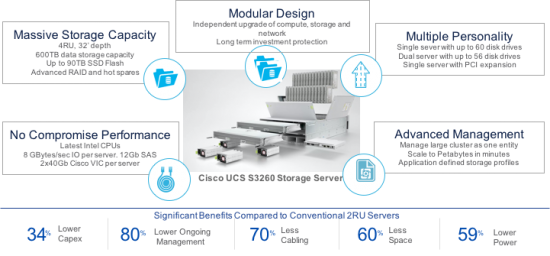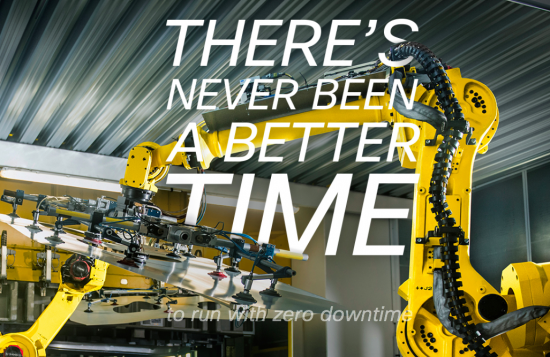































It begins with connecting the unconnected.That the world is undergoing digital transformation is without question. Billions of devices are connected to the internet, and billions
more will be connected by 2020.
Over three and a half billion people have internet access today with another billion and a half coming online by 2020. Let's not forget that when you bring something online it's not just connected to the Internet -it is connected to everything else.
 This is connecting the unconnected and it is an implacable, unstoppable force that shows no mercy and takes no prisoners. With these connections comes an unprecedented volume of data that successful companies are leveraging in innovative ways.
This is connecting the unconnected and it is an implacable, unstoppable force that shows no mercy and takes no prisoners. With these connections comes an unprecedented volume of data that successful companies are leveraging in innovative ways.
Clearly,you can't analyze data you haven't stored. But there's more. Increasingly, companies are faced with the realization that they can't analyze data they have stored but have archived. They have to 'unstore' it first. Actually, first they have to find it, then restore it, then analyze it. All the while the clock's ticking.
And so as we move ahead connecting the unconnected, we find we also need to store the unstored. This includes new data arriving in volumes never before seen, and data we already have and must have immediate access to. It's no longer about simply accumulating data but constantly analyzing it, transforming it and creating value with it in new ways.
When we store the unstored, we can:
Digital transformation demands higher capacity storage at lower cost. Internet of Things (IoT) devices such as smart sensors, connected machines and connected automobiles, mobile phones and social media, e-commerce and video surveillance systems, etc. are all generating data at an unprecedented scale. Data storage requirements are increasing in line withMoore's law (in some cases faster) but the data center footprint, IT staff and funding are not -a lot of optimization is required. So higher storage capacity at lower cost is a must have.
data center footprint, IT staff and funding are not -a lot of optimization is required. So higher storage capacity at lower cost is a must have.
Traditional storage arrays are expensive and have limited scalability. The vision of Cisco's S-series is to address the every growing demand for dense, high performance and highly scaleable storage systems. The first server in this series, the S3260, is specifically addressing these requirements:
The Cisco UCS S3260 Storage Server is a modular platform designed for applications that need to store and process large amounts of data and scale effortlessly as the applications demand. The system adds several innovations to the Cisco Unified Computing System improving
on the server, fabric and advanced management.
 upgraded. Never scrap a server again.
upgraded. Never scrap a server again.On November 17th we'll be holding a joint webinar with Intel where we'll discuss the challenges of data intensive applications and the applications and hardware to address them. Click here toregister
The Cisco UCS S3260 Storage Server employs a modular design making it flexible enough to handle a wide variety of workloads.

Big data is a big market. IDC estimates the big data technology and services market will exceed$48 billion in 2019. Business intelligence used to mean collecting data, warehousing it and reporting on it periodically. Now data in huge volume is moving from source to consumer at lightning speed, streamed in real-time and analyzed for immediate use. Let me give you few examples.
Finance:Financial institutions around the world are under pressure to both prevent financial crime, and meet regulatory and compliance requirements. This includes fraud detection, money laundering, terrorist financing, identifying sanctioned entities and maintaining high quality data lineage. The industry is struggling to handle the volume, velocity and variety of data that is fragmented across many silos.
Big data technology allows financial institutions to consolidate their data from different systems across different lines of business in a more efficient and cost effective way, providing a consolidated 360-degree view of their customer information and transactions. The storage and use of this data varies widely from real-time, low-latency fraud detection to long-term archive storage for compliance purposes.
The Cisco UCS S3260 Storage Server is uniquely positioned to aid financial institutions with its combination of high-density storage and high-performance architecture. The modular design gives IT departments the flexibility to match the configuration to the need.
Manufacturing: Many manufacturing industries employ very complex processes to create their products. For example, pharmaceutical companies and semiconductor manufacturers both monitor hundreds of dependent and independent variables as the material moves through the production line. Even small variations in the raw material and equipment processing can create very large changes in the final yield
hundreds of dependent and independent variables as the material moves through the production line. Even small variations in the raw material and equipment processing can create very large changes in the final yield and the quality of the product.
and the quality of the product.
Increasingly, companies are turning to big data to address these issues, both preventing manufacturing excursions using real-time processing, and in the identification of important relationships between variables to improve quality and yield. The S3260's ability to effortlessly store huge volumes of unstructured data, process it live while the data is in-motion, and analyze it after the fact when it's at-rest, makes it the perfect choice to improve quality, increase yield and lower cost in complex manufacturing environments.
Health Care: Big data technology is quietly revolutionizing health care. Using applications built on big data, people are able to live healthier lives and get the right care by the right provider at the right time.
 One provider implemented a system that stores and shares data across all facilities and promotes the use of up-to-date electronic health records. The integrated system has improved outcomes in cardiovascular disease and achieved an estimated$1 billion in savings from reduced office visits and lab tests. Another provider developed an integrated system that delivers evidence-based care by coordinating doctors, hospitals and health plans using personalized data.
One provider implemented a system that stores and shares data across all facilities and promotes the use of up-to-date electronic health records. The integrated system has improved outcomes in cardiovascular disease and achieved an estimated$1 billion in savings from reduced office visits and lab tests. Another provider developed an integrated system that delivers evidence-based care by coordinating doctors, hospitals and health plans using personalized data.
Others are conducting real world studies of chronic illnesses and common diseases, then combining the results with clinical trial data for analysis to determine the most effective treatments. The same data is also used to guide R&D investment decisions.
Hospitals are using real-time data processing in concert with predictive analytics tools to enable highly advanced, forward-looking and customized treatment plans for patients. Patient records aren't just being digitized and stored. Diagnostic imaging data is being analyzed in real time for faster and better outcomes
All of these initiatives are driven by the large scale storage and processing of structured and unstructured data. The volume of data requires dense storage to be cost-effective and high-performance to be timely. These are two features where the S3260 shines.
Cisco has published validated designs with major ISVs including Cloudera, Hortonworks, IBM, MapR, SAP, Splunk and others consisting of systems and solutions that have been designed, tested, and documented to facilitate faster, more reliable, and more predictable customer deployments and significantly lower the cost of ownership.
Data volumes are growing dramatically. Even mundane systems like email and file sharing are growing at an alarming rate. Traditionally, high-end proprietary (and expensive) systems are used for data protection. The new trend is scale out at a significantly lower cost per terabyte.
The need for data protection solutions is obvious. They are insurance for the business, reducing risk by storing and safeguarding the business data, making it readily available when needed. This includes recovery from failure, both spot failures and disaster recovery, but also the increasingly important need to meet regulatory and compliance requirements by retaining data for a specified retention period.
Cisco provides tested data protection solutions partnered with leading software vendors. These solutions are offered across the entire data center infrastructure: bare-metal, converged and hyper converged solutions. The flexibility, high density storage with exceptional I/O, along with the state-of-the-art network bandwidth (4
 Etiquetas calientes:
Transformación Digital
Cisco UCS
Hadoop
BigData
software defined storage
S3260
Etiquetas calientes:
Transformación Digital
Cisco UCS
Hadoop
BigData
software defined storage
S3260